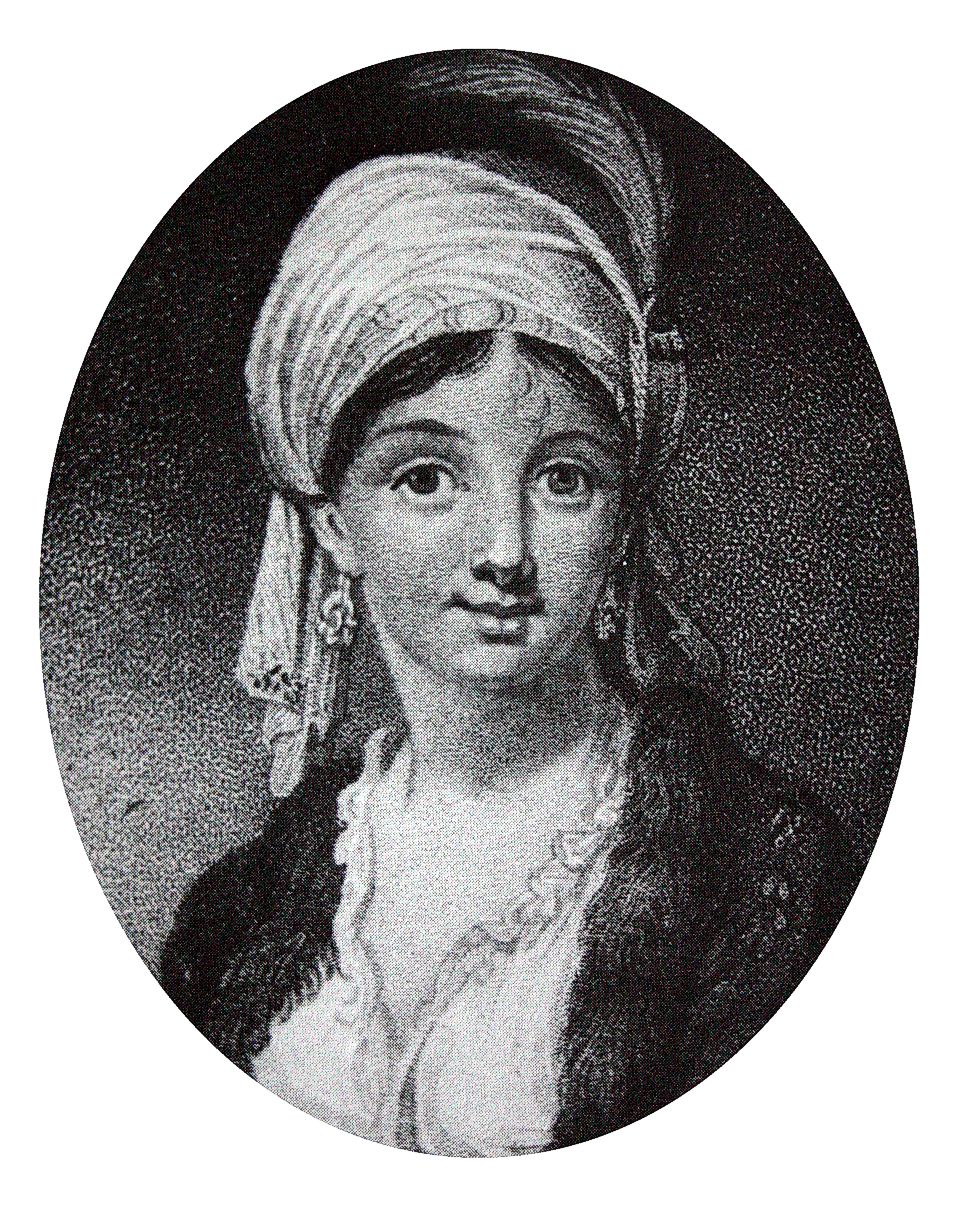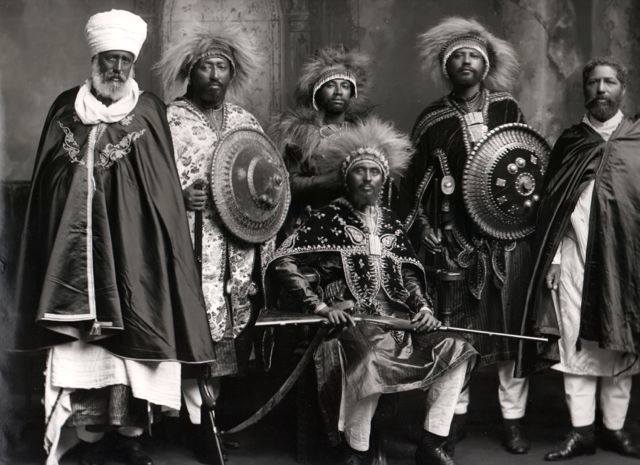|
Iyoas I
Iyoas I ( Ge'ez: ኢዮአስ; died 14 May 1769), throne name Adyam Sagad (Ge'ez: አድያም ሰገድ) was Emperor of Ethiopia from 27 June 1755 to 7 May 1769, and a member of the Solomonic dynasty. He was the infant son of Iyasu II and Wubit (Welete Bersabe), the daughter of an Oromo chieftain of the Karrayyu. Iyoas and Mentewab Despite his extreme youth, he was the candidate proposed by Empress Mentewab, his grandmother, who then acted as his regent. Her proposal was supported by the great nobles of the reign, ''Ras'' Wolde Leul her brother, Waragna, Ayo governor of Begemder, and ''Ras'' Mikael Sehul. One handicap with this tactic of ruling through a proxy, as Richard Pankhurst points out, was that neither Iyoas, due to his age, nor Empress Mentewab, due to her sex, could operate far from the capital city of Gondar, and relied on Waragna and her brothers to lead many of the military campaigns. The very first challenge to Iyoas' rule, when Nanna Giyorgis rebelled in Damo ... [...More Info...] [...Related Items...] OR: [Wikipedia] [Google] [Baidu] |
Ethiopian Aristocratic And Court Titles
Until the end of the Ethiopian monarchy in 1974, there were two categories of nobility in Ethiopia and Eritrea. The Mesafint ( gez, መሳፍንት , modern , singular መስፍን , modern , "prince"), the hereditary nobility, formed the upper echelon of the ruling class. The Mekwanint ( gez, መኳንንት , modern , singular መኰንን , modern or am, መኮንን , "officer") were the appointed nobles, often of humble birth, who formed the bulk of the aristocracy. Until the 20th century, the most powerful people at court were generally members of the ''Mekwanint'' appointed by the monarch, while regionally, the ''Mesafint'' enjoyed greater influence and power. Emperor Haile Selassie greatly curtailed the power of the ''Mesafint'' to the benefit of the ''Mekwanint'', who by then were essentially coterminous with the Ethiopian government. The ''Mekwanint'' were officials who had been granted specific offices in the Abyssinian government or court. Higher ranks from the titl ... [...More Info...] [...Related Items...] OR: [Wikipedia] [Google] [Baidu] |
Mikael Sehul
Mikael Sehul (born Blatta Mikael; 1692 – 1784) was a nobleman who ruled Ethiopia for a period of 25 years as regent of a series of weak emperors. He was also a Ras or governor of Tigray 1748–71 and again from 1772 until his death. He was a major political figure during the reign of Emperor Iyasu II and his successors until almost the time of his death. The Scottish explorer James Bruce met Mikael during his stay in Ethiopia, and recorded the following description of the Ras when he granted Bruce an audience: We went in, and saw the old man sitting upon a sofa; his white hair was dressed in many short curls. He appeared to be thoughtful, but not displeased; his face was lean, his eyes quick and vivid, but seemed to be a little sore from exposure to the weather. he seemed to be about six feet high, though his lameness made it difficult to guess with accuracy. His air was perfectly free from constraint, what the French call ''degagée''. In face and person he was liker my learn ... [...More Info...] [...Related Items...] OR: [Wikipedia] [Google] [Baidu] |
Fasil Of Damot
Fasilides ( Ge'ez: ፋሲልደስ; ''Fāsīladas''; 20 November 1603 – 18 October 1667), also known as Fasil, Basilide, or Basilides (as in the works of Edward Gibbon), was Emperor of Ethiopia from 1632 to his death on 18 October 1667, and a member of the Solomonic dynasty. His throne name was Alam Sagad (Ge'ez: ዓለም ሰገድ). Of Amhara descent, he was the son of Emperor Susenyos I and Empress Seltan Mogasa (Ge'ez: ሥልጣን ሞገሳ) (throne name) or Wald Sa'ala (Ge'ez: ወልድ ሠዓለ) (name) of Wagda Katata and Merhabete. Emperor Fasilides was born at Magazaz in Bulga, Shewa. His paternal grandfather's name was also Fasilides. He was builder of the Fasil palace. History Fasilides was proclaimed emperor in 1630 during a revolt led by Sarsa Krestos, but did not reach the throne until his father abdicated in 1632. Once he became emperor, Fasilides immediately restored the official status of the traditional Ethiopian Orthodox Church. He sent for a new ' ... [...More Info...] [...Related Items...] OR: [Wikipedia] [Google] [Baidu] |
Jawa Oromo
Jawa may refer to: Places Southeast Asia *Java ( jv, Jawa), the most populous and fifth-largest island in Indonesia and the site of its capital, Jakarta **East Java, also called Jawa Timur, a province on the Indonesian island of Java **Central Java, also called Jawa Tengah, a province on the Indonesian island of Java **West Java, also called Jawa Barat, a province on the Indonesian island of Java *Chek Jawa, a cape and the name of its 100-hectare wetlands located on the south-eastern tip of Pulau Ubin off coast of Singapore *Karimunjava, an archipelago of 69 islands in the Java Sea, Indonesia, approximately 80 kilometres northwest of Jepara *Padang Jawa, a small town in Selangor, Malaysia *Parit Jawa, a main town in Muar district, Johor, Malaysia Middle East *Jawa, Jordan, archaeological site in Jordan *Tall Jawa, Iron Age village in central Jordan * Zaduqabad, Iran, a village in Markazi Province, Iran, also known as Jāwa Entertainment * Jawa (''Star Wars''), a fictional alien s ... [...More Info...] [...Related Items...] OR: [Wikipedia] [Google] [Baidu] |
Ras Al-Fil
Ras al-Fil (Arabic: lit. 'head of the elephant') was a former governorate of the Christian Ethiopian state, located to the west of the river Atbara and Mätämma near the Ethiopian-Sudanese border. Ras al-Fil seems to have been the principal market for gold on a caravan route between Gonder, Sinnar and Fung, often frequented by Säbärti as well as Sinnar merchants. It was a four day journey from Sinnar, and was considered one of the safest trade routes between the two countries. Though its territorial extent is unclear, Ras al-Fil once consisted of 39 villages. After the military expedition of Atse Iyasu II and Ras Wäldä Léul against them, Ras al-Fil no longer paid tribute to Sinnar and became one of Ethiopia's frontier provinces. Most of its inhabitants were expert horsemen. At the time of James Bruce's visit, it was ruled by a Christian called Ato Kénfu. Bruce was offered a deputy governorship that he did not exercise actively owing to its unfavourable location. Badi IV ... [...More Info...] [...Related Items...] OR: [Wikipedia] [Google] [Baidu] |
Kingdom Of Sennar
The Funj Sultanate, also known as Funjistan, Sultanate of Sennar (after its capital Sennar) or Blue Sultanate due to the traditional Sudanese convention of referring to black people as blue () was a monarchy in what is now Sudan, northwestern Eritrea and western Ethiopia. Founded in 1504 by the Funj people, it quickly converted to Islam, although this embrace was only nominal. Until a more orthodox Islam took hold in the 18th century, the state remained an "African empire with a Muslim façade". It reached its peak in the late 17th century, but declined and eventually fell apart in the 18th and 19th centuries. In 1821, the last sultan, greatly reduced in power, surrendered to the Ottoman Egyptian invasion without a fight. History Origins Christian Nubia, represented by the two medieval kingdoms of Makuria and Alodia, began to decline from the 12th century. By 1365 Makuria had virtually collapsed and was reduced to a petty kingdom restricted to Lower Nubia, until finally disapp ... [...More Info...] [...Related Items...] OR: [Wikipedia] [Google] [Baidu] |
Badi IV
Badi IV (reigned 1724–1762; died 1764), also known as Badi abu Shilluk, was a ruler of the Kingdom of Sennar. He was the son of his predecessor, Nul. When Emperor Iyasu II of Ethiopia invaded his realm in 1738, the army of Sennar under the leadership of Hamis, a prince of Darfur, inflicted a significant defeat of the invaders at the Battle of the Dindar River. He was deposed by his son, Nasir, with the help of his vizier Sheikh Adelan and his brother Abu Kalec the governor of Kordofan. Badi fled to sanctuary in Ethiopia, where ''Ras'' Mikael Sehul became his mentor. Ras Mikael convinced Emperor Iyoas I to appoint him governor of the province of Ras al-Fil, near the border with Sennar. However, despite the advice of ''Ras'' Wolde Leul, one of Iyoas' senior counselors, envoys from Sennar convinced Badi to return to Sennar where he was quietly murdered after an imprisonment of two years. The Scots explorer James Bruce adds that Badi was killed by Welled Hassan, the governor ... [...More Info...] [...Related Items...] OR: [Wikipedia] [Google] [Baidu] |
Amharic Language
Amharic ( or ; (Amharic: ), ', ) is an Ethiopian Semitic languages, Ethiopian Semitic language, which is a subgrouping within the Semitic languages, Semitic branch of the Afroasiatic languages. It is spoken as a first language by the Amhara people, Amharas, and also serves as a lingua franca for all other populations residing in major cities and towns of Ethiopia. The language serves as the official working language of the Ethiopian federal government, and is also the official or working language of several of Regions of Ethiopia, Ethiopia's federal regions. It has over 31,800,000 mother-tongue speakers, with more than 25,100,000 second language speakers. Amharic is the most widely spoken language in Ethiopia, and the second most spoken Languages of Ethiopia, mother-tongue in Ethiopia (after Oromo language, Oromo). Amharic is also the second largest Semitic language in the world (after Arabic). Amharic is written left-to-right using a system that grew out of the Geʽez script. ... [...More Info...] [...Related Items...] OR: [Wikipedia] [Google] [Baidu] |
Oromo Language
Oromo ( or ; Oromo: ''Afaan Oromoo''), in the linguistic literature of the early 20th century also called Galla (a name with a pejorative meaning and therefore rejected by the Oromo people), is an Afroasiatic language that belongs to the Cushitic branch. It is native to the Ethiopian state of Oromia and Northern Kenya and is spoken predominantly by the Oromo people and neighboring ethnic groups in the Horn of Africa. It is used as a lingua franca particularly in Ethiopia and northeastern Kenya. With more than 36 million speakers making up 33.8% of the total Ethiopian population, Oromo has the largest number of native speakers in Ethiopia, and ranks as the second most widely spoken language in Ethiopia by total number of speakers (including second-language speakers) following Amharic. Forms of Oromo are spoken as a first language by an additional half-million people in parts of northern and eastern Kenya. It is also spoken by smaller numbers of emigrants in other African count ... [...More Info...] [...Related Items...] OR: [Wikipedia] [Google] [Baidu] |
Grazmach
Until the end of the Ethiopian monarchy in 1974, there were two categories of nobility in Ethiopia and Eritrea. The Mesafint ( gez, መሳፍንት , modern , singular መስፍን , modern , "prince"), the hereditary nobility, formed the upper echelon of the ruling class. The Mekwanint ( gez, መኳንንት , modern , singular መኰንን , modern or am, መኮንን , "officer") were the appointed nobles, often of humble birth, who formed the bulk of the aristocracy. Until the 20th century, the most powerful people at court were generally members of the ''Mekwanint'' appointed by the monarch, while regionally, the ''Mesafint'' enjoyed greater influence and power. Emperor Haile Selassie greatly curtailed the power of the ''Mesafint'' to the benefit of the ''Mekwanint'', who by then were essentially coterminous with the Ethiopian government. The ''Mekwanint'' were officials who had been granted specific offices in the Abyssinian government or court. Higher ranks from the tit ... [...More Info...] [...Related Items...] OR: [Wikipedia] [Google] [Baidu] |




